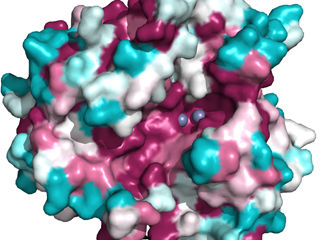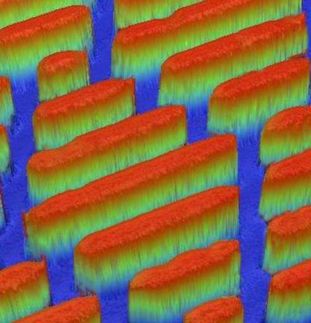How bacteria produce antibiotics
Researchers decipher important steps in the formation of a natural antibiotic
Advertisement
In the 1950s, researchers discovered bottromycins – natural substances produced by bacteria with antibiotic activity. Since these substances even kill human pathogens such as the hospital germ MRSA (methicillin-resistant Staphylococcus areus), they are of interest for drug development. After the discovery of bottromycins, it took until 2012 before researchers from the Helmholtz Centre for Infection Research (HZI) and its Saarbrücken location, the Helmholtz Institute for Pharmaceutical Research Saarland (HIPS), were able to identify the genes that bacteria need to form bottromycins. Now they were able to further unravel the underlying reactions in the bacterial cells.

The surface of the enzyme PurAH with the two catalytic zinc ions (grey spheres) bound at the active site.
© HIPS / Köhnke
”To develop bottromycins further, the producing bacteria need to be persuaded to make new versions of bottromycin that have improved properties,“ says Jun.-Prof. Jesko Köhnke, who heads the junior research group ”Structural Biology of Biosynthetic Enzymes“ at HIPS. For this, however, the scientists must first understand how the complicated chemical reactions during the formation of bottromycin are performed within the bacterial cell in detail. Together with Prof. Iris Antes' research group at the Technical University of Munich, Köhnke's team has now presented a detailed study on the enzyme PurAH, which plays an important role in the production of bottromycin. In addition to the reaction performed by this enzyme, the scientists have also determined its three-dimensional structure at the atomic level. They found PurAH to collaborate with another bottromycin enzyme, which places PurAH as the gatekeeper of bottromycin biosynthesis. These findings will be important in future efforts to produce improved bottromycins. The scientists published their results in the renowned Journal of the American Chemical Society.



























































